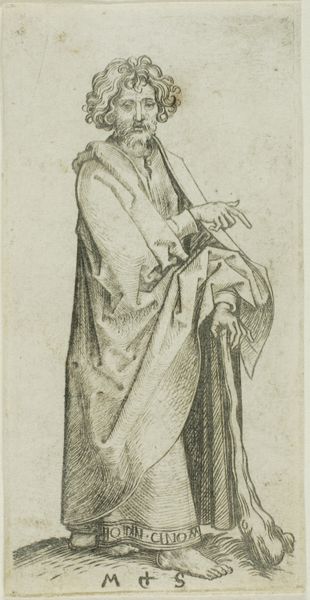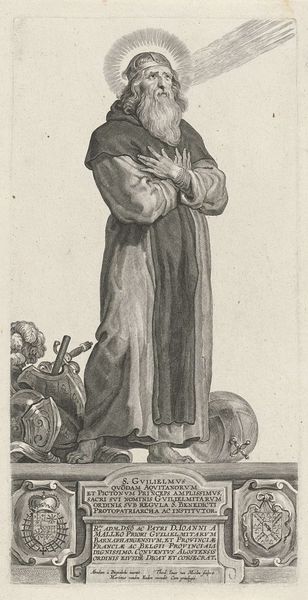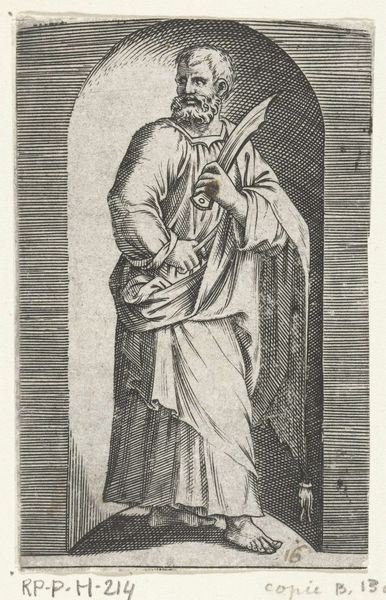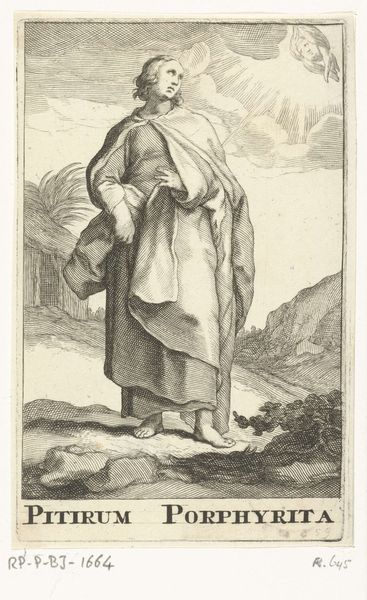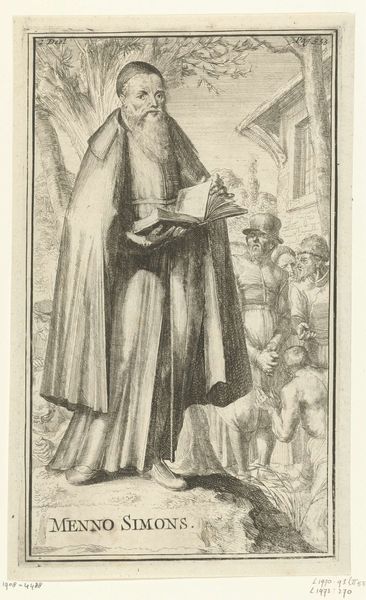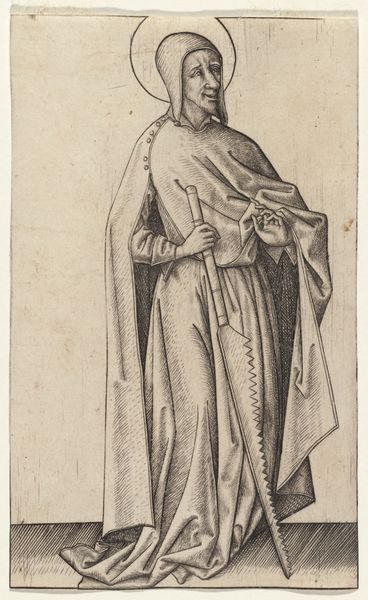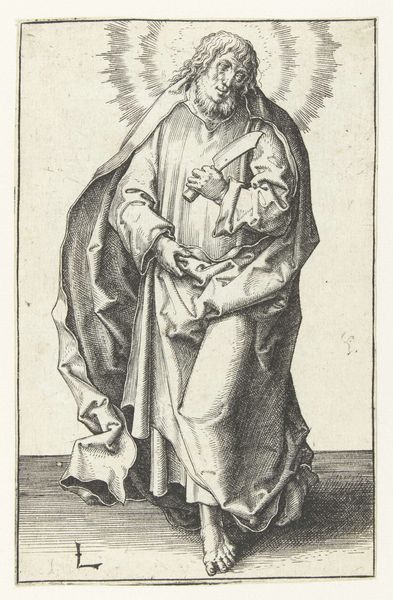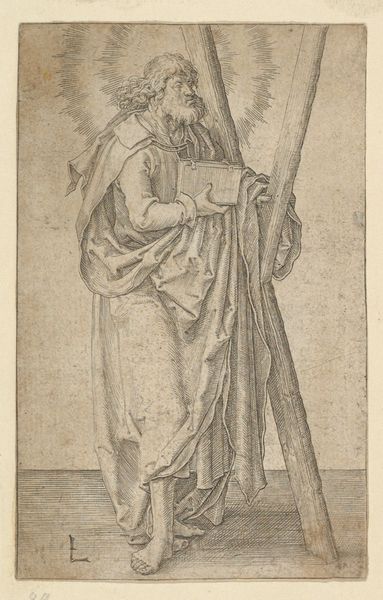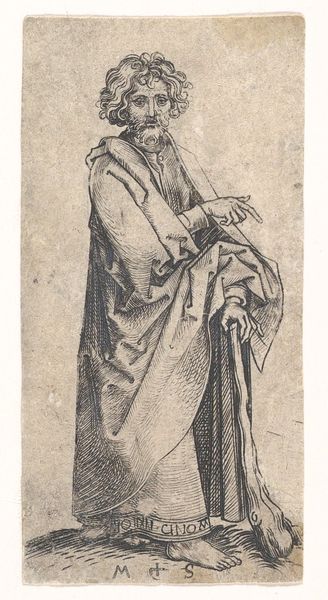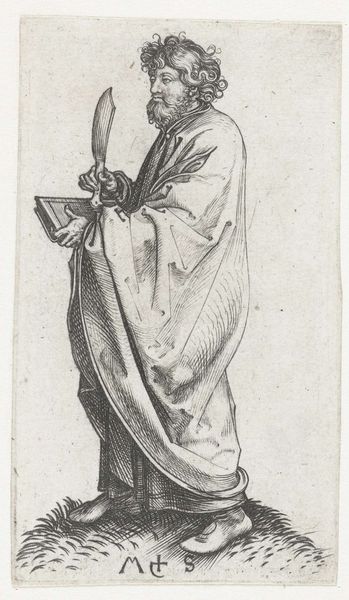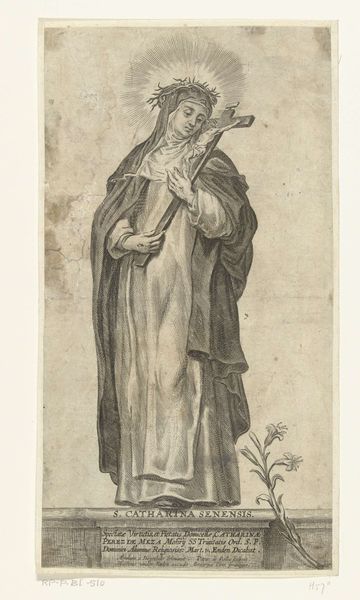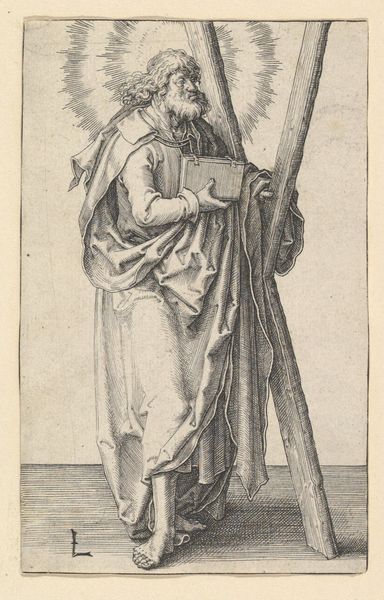
engraving
#
portrait
#
aged paper
#
toned paper
#
light pencil work
#
baroque
#
old engraving style
#
personal sketchbook
#
pen-ink sketch
#
history-painting
#
engraving
Dimensions: height 267 mm, width 158 mm
Copyright: Rijks Museum: Open Domain
Romeyn de Hooghe made this portrait of Johannes Calvin using etching, a printmaking technique that emerged in the 16th century. The process begins with a metal plate, usually copper, coated with a waxy, acid-resistant substance. The artist then draws through this coating with a sharp needle, exposing the metal. When the plate is immersed in acid, the exposed lines are eaten away, creating grooves. These grooves hold ink, which is then transferred to paper under high pressure. The fine lines and detailed shading we see here are characteristic of etching, allowing de Hooghe to capture Calvin’s likeness with remarkable precision. But beyond mere representation, the choice of etching speaks to the democratizing potential of printmaking. Unlike unique paintings, etchings can be reproduced and distributed widely. In this way, de Hooghe’s print participates in a broader cultural project: disseminating images and ideas across geographic and social boundaries. It reminds us that art is not just about individual expression, but also about the technologies that enable its circulation and influence.
Comments
No comments
Be the first to comment and join the conversation on the ultimate creative platform.
